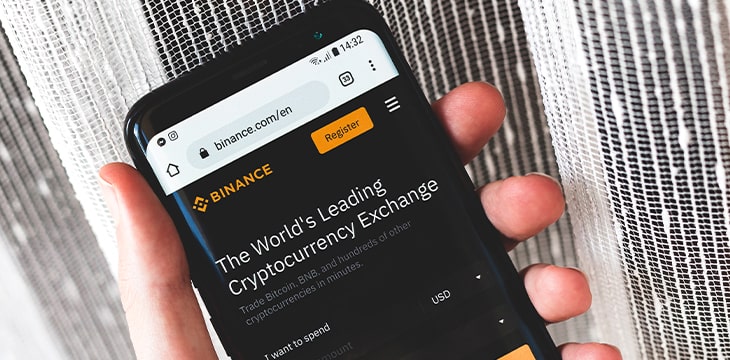| Getting your Trinity Audio player ready... |
A rising number of Binance customers are expressing frustration with unsuccessful efforts to withdraw their money from the controversial cryptocurrency exchange, increasing the likelihood of regulatory blowback for the company’s key executives.
Binance has of late found itself being called to task by financial regulators in a growing number of jurisdictions, prompting a number of financial institutions to block payments to the site. On Monday, U.K. payment processor Clear Junction announced it “will no longer be facilitating payments related to Binance” in keeping with the U.K. financial regulator’s late-June warning that the exchange was operating without local approval.
Clear Junction – which had been one of #Binance's key payments partners in Europe – says it has "decided to suspend both pound and euro payments and will no longer be facilitating deposits or withdrawals in favour of or on behalf of the crypto trading platform." pic.twitter.com/mGQqZWIbhU
— Adam Samson (@adamsamson) July 12, 2021
Australia may soon add its name to Binance’s ever widening list of regulatory hot spots. The Daily Telegraph recently reported on a number of angry Binance customers left high and dry by frequent service disruptions that tend to occur as digital currency prices plunge.
Binance has a habit of scheduling ‘unscheduled maintenance’ during periods in which ‘sell’ orders vastly outnumber buyers. By the time customers’ access to their accounts is restored, they often find their positions liquidated and the site unwilling to offer compensation that exceeds pennies on the dollar.
Numerous online commenters have noted that Binance’s technology appears to have no such problems during periods in which buyers dramatically exceed sellers. Yet when withdrawal requests dramatically outpace deposits, the Binance platform suddenly becomes as wobbly as a newborn calf.
Your call is important to us, we guess
Similar consumer complaints are being made in the U.S., as Gizmodo recently published a list of complaints that Binance customers filed with the U.S. Federal Trade Commission (FTC) over the past 12 months. Studying 200 of the 760 complaints confirmed by the FTC, Gizmodo identified ‘illuminating patterns’ of procedural roadblocks the exchange reportedly erects when customers request withdrawals of the funds in their accounts.
Most of the complaints refer to Binance.US, the offshoot established in 2019 after the parent company claimed to have blocked U.S. customers to avoid further scrutiny by U.S. financial authorities. However, the ‘Tai Chi’ document that was leaked to Forbes magazine in 2020 revealed that Binance.US was intended as a smokescreen to offer the illusion of regulatory compliance while Binance.com continued to illegally accept U.S. customers through the use of virtual private networks (VPN).
The complaints cited by Gizmodo also exposed the utter futility of dealing with Binance customer support. The company, which famously boasts of having no corporate HQ, appears to have no human support staff, relying instead on an AI chat-bot to offer generic solutions to customer problems.
Binance’s social media feeds are quick to respond to customers’ public complaints with assurances of their concerns being ‘escalated’ somewhere up the support food chain, but these comments are usually met with customers’ retorts that previous assurances of this type proved to be not worth the non-paper on which they’re printed.
Who’s the (soon to be jailed) boss?
The consumer complaints add to Binance’s U.S. woes, as the site is already being probed for alleged money laundering and tax avoidance by the Internal Revenue Service (IRS) and the Department of Justice (DoJ), while the Commodity Futures Trading Commission (CFTC) is investigating whether Binance served New York citizens without local permission.
Earlier this month, Binance.US CEO Brian Brooks attempted to distance his company from the intensifying regulatory spotlight on the Binance mothership, telling Bloomberg TV that Binance.US was “essentially a Binance-branded exchange” that merely licensed a name and technology from Binance.com. Brooks claimed that the only common thread linking Binance.com and Binance.US was they were both founded by Changpeng ‘CZ’ Zhao.
Crypto Exchange https://t.co/uUscAoCFWQ has hired ex-California regulator Manuel Alvarez as its chief administrative officer.
Brian Brooks, the CEO of https://t.co/uUscAoCFWQ, discusses the decision to bring him on the team https://t.co/ujhLfZuugC pic.twitter.com/H2n9rEaAQ6
— Bloomberg TV (@BloombergTV) July 6, 2021
Unfortunately, Brooks’ comments appear to confirm the strategy laid out in Binance’s ‘Tai Chi’ document, which called for the establishment of a superficially arms-length entity that could “insulate Binance from U.S. enforcement” by limiting formal ties between the two sites to a purely contractual relationship.
This apparent admission by Brooks—a former acting head of the Office of the Comptroller of the Currency (OCC) during the twilight of the Trump administration—that the company he leads is the Tai Chi decoy for U.S. regulatory scrutiny could leave him open to federal charges if Binance opts for a rug pull when its liquidity crisis grows too severe to mask.
Who else in the crosshairs?
Before Brooks was named CEO of Binance.US this April, the company was led by Catherine Coley, whom Fortune reported had been ‘chose[n]’ to lead the U.S. company by none other than Binance founder CZ. That pokes yet another hole in the notion that the U.S. offshoot is as independent as Brooks and CZ would have us believe.
As of April 25, Coley’s name was still on the list of directors of BAM Trading Services Inc., the San Francisco-based firm that partnered with Binance on the launch of Binance.US in 2019. However, when Brooks was announced as Coley’s replacement on April 20, he stated that she was no longer on the BAM board.
According to BAM’s most recent annual report, the company had two other directors: CZ and Wei Zhou, Binance’s former CFO, who abruptly left the company in June, an exit the company claimed was made “for personal reasons.” The only other individual listed on the BAM report is CFO Joshua Sroge, who began his Binance.US adventure in January 2020.
Coley’s exit from the Binance fold was as abrupt as Wei’s, yet her departure didn’t even warrant the lame ‘personal reasons’ excuse. Since Brooks assumed the reins, Coley’s social media sites have gone dormant (she last tweeted the day before Brooks’ appointment was announced and her LinkedIn hasn’t been updated to reflect her Binance departure). As corporate escapes go, this one was pure Houdini.
The disappearing act may not be enough to diminish the interest of U.S. authorities, who won’t hesitate to go after everyone it believes may have played a role in perpetrating a fraud on US soil. Having been asleep at the wheel for any number of high-profile scams (Enron, Madoff, subprime mortgages, etc.), U.S. authorities badly need a win to restore the belief that someone—anyone—is keeping the financial players honest. The dishonest brokers at Binance may well fit that bill.
Follow CoinGeek’s Crypto Crime Cartel series, which delves into the stream of groups—from BitMEX to Binance, Bitcoin.com, Blockstream, ShapeShift, Coinbase, Ripple and
Ethereum—who have co-opted the digital asset revolution and turned the industry into a minefield for naïve (and even experienced) players in the market.
New to blockchain? Check out CoinGeek’s Blockchain for Beginners section, the ultimate resource guide to learn more about blockchain technology.








